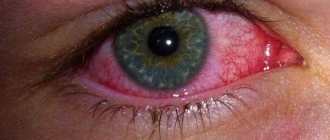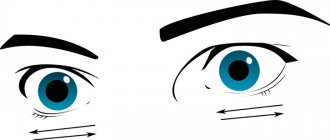The brain is a powerful control center that sends commands throughout the body and controls the progress of their implementation. It is thanks to him that we perceive the world and are able to interact with it. The kind of brain a modern person has, his intelligence, thinking, are the result of millions of years of continuous evolution of mankind, his structure is unique.
The brain is characterized by division into zones, each of which specializes in performing its own specific functions. It is important to have information about what functions each zone performs. Then you can easily understand why specific symptoms appear in such common diseases as Parkinson’s disease, Alzheimer’s disease, stroke, etc. Disorders can be regulated with medication, as well as with the help of special exercises and physical procedures.
The brain is structurally divided into:
- rear;
- average;
- front.
Each of them has their own role.
In an embryo, the head develops faster than other parts of the body. In a one-month-old embryo, all three parts of the brain can be easily seen. During this period they look like “brain bubbles”. The brain of a newborn is the most developed system in his body.
Scientists attribute the hindbrain and midbrain to more ancient structures. It is this part that is entrusted with the most important functions - maintaining breathing and blood circulation. The boundaries of their functions are clearly separated. Each gyrus does its job. The more pronounced the groove became during development, the more functions it could perform. But the anterior section provides everything that connects us with the external environment (speech, hearing, memory, ability to think, emotions).
There is an opinion that a woman's brain is smaller than a man's brain. Data from modern hardware studies, in particular on a tomograph, have not confirmed this. This definition can easily be called erroneous. The brain of different people may differ in size and weight, but this does not depend on gender.
Knowing the structure of the brain, you can understand why certain diseases appear and what their symptoms depend on.
Structurally, the brain consists of two hemispheres: right and left. Outwardly, they are very similar and are interconnected by a huge number of nerve fibers. Each person has one side that is dominant, right-handers have the left side, and left-handers have the right side.
There are also four lobes of the brain. You can clearly see how the functions of the shares are differentiated.
Frontal
These lobes have a frontal location, they occupy the forehead area. Let's figure out what the frontal lobe is responsible for. The frontal lobes of the brain are responsible for sending commands to all organs and systems. They can be figuratively called a “command post.” It would take a long time to list all their functions. These centers are responsible for all actions and provide the most important human qualities (initiative, independence, critical self-esteem, etc.). When they are defeated, a person becomes carefree, changeable, his aspirations have no meaning, he is prone to inappropriate jokes. Such symptoms may indicate atrophy of the frontal lobes, leading to passivity, which is easily mistaken for laziness.
Each lobe has a dominant and auxiliary part. For right-handed people, the left area will be dominant and vice versa. If you separate them, it is easier to understand which functions are assigned to a specific area.
It is the frontal lobes that control human behavior. This part of the brain sends commands that prevent a specific antisocial action from being performed. It is easy to notice how this area is affected in dementia patients. The internal limiter is turned off, and the person can tirelessly use obscene language, indulge in obscenities, etc.
The frontal lobes of the brain are also responsible for planning, organizing voluntary actions, and mastering the necessary skills. Thanks to them, those actions that seem very difficult at first become automatic over time. But when these areas are damaged, the person performs the actions as if anew each time, and automaticity is not developed. Such patients forget how to go to the store, how to cook, etc.
When the frontal lobes are damaged, perseveration can occur, in which patients literally become fixated on performing the same action. A person may repeat the same word, phrase, or constantly move objects around aimlessly.
The frontal lobes have a main, dominant, most often left, lobe. Thanks to her work, speech, attention, and abstract thinking are organized.
It is the frontal lobes that are responsible for maintaining the human body in an upright position. Patients with their lesions are distinguished by a hunched posture and a mincing gait.
Who has developed right-sided thinking?
Typically, women's right hemisphere functions better than men's. This is one of the reasons why misunderstandings so often arise between the weaker and stronger sex. Thanks to this kind of thinking, women have predominant qualities such as intuition, imagination, and daydreaming, while men have predominant qualities such as logic and analyticalness.
Previously, it was believed that right-handers had more developed left-brain thinking, and left-handers had more developed right-brain thinking. Now neuropsychology experts are coming to the conclusion that this is not entirely true. The studies were carried out using magnetic resonance imaging (MRI). When a right-handed person wrote, the activity of waves from the left hemisphere increased; when a left-handed person wrote, it was the opposite. This test only proved once again that each side of the brain is responsible for the opposite side of the body.
For many famous artists, sculptors, and composers, the right side of the brain is more active, but the left hemisphere also works no less than average. Therefore, it is necessary to improve your brain in order to achieve balance in its functioning.
Temporal
They are responsible for hearing, turning sounds into images. They provide speech perception and communication in general. The dominant temporal lobe of the brain allows you to fill the words you hear with meaning and select the necessary lexemes in order to express your thoughts. The non-dominant helps to recognize intonation and determine the expression of a human face.
The anterior and middle temporal regions are responsible for the sense of smell. If it is lost in old age, it may signal incipient Alzheimer's disease.
The hippocampus is responsible for long-term memory. It is he who stores all our memories.
If both temporal lobes are affected, a person cannot assimilate visual images, becomes serene, and his sexuality goes through the roof.
Harmonious brain function
A person is uniquely designed, the whole body functions in such a way that one organ helps another. The hand is capable of scratching the eye, washing the face. Air enters through the nose, which enters the lungs and saturates the blood. Both hemispheres of the brain work the same way. The left hemisphere of the brain is responsible for allowing a person to process mathematical symbols, and the right hemisphere helps him by finding visual substitutes for these symbols. Thus, using the abilities of both hemispheres, a person remembers and understands the symbols he sees as much as possible. Due to the fact that each part complements each other, some abilities cannot be clearly attributed to the work of one or another part of the brain. It is impossible to fully answer the question of which hemisphere is responsible for creativity, because the concept of creativity is very broad.
People with a dominant left hemisphere can think abstractly and creatively, while a dominant right hemisphere is responsible for musical perception. And only the presence of a certain set of abilities allows a person to become talented or brilliant in one field or another. In addition, it has been proven that when one half of the brain is injured or damaged, a person can completely lose certain abilities, but at the same time, another part of the brain takes on a certain function to fill the gap.
Parietal
In order to understand the functions of the parietal lobes, it is important to understand that the dominant and non-dominant side will do different jobs.
The dominant parietal lobe of the brain helps to understand the structure of the whole through its parts, their structure, order. Thanks to her, we know how to put individual parts into a whole. The ability to read is very indicative of this. To read a word, you need to put the letters together, and you need to create a phrase from the words. Manipulations with numbers are also carried out.
The parietal lobe helps to link individual movements into a complete action. When this function is disrupted, apraxia is observed. Patients cannot perform basic actions, for example, they are not able to get dressed. This happens with Alzheimer's disease. A person simply forgets how to make the necessary movements.
The dominant area helps you feel your body, distinguish between the right and left sides, and relate parts and the whole. This regulation is involved in spatial orientation.
The non-dominant side (in right-handed people it is the right side) combines information that comes from the occipital lobes and allows you to perceive the world around you in three-dimensional mode. If the non-dominant parietal lobe is disrupted, visual agnosia may occur, in which a person is unable to recognize objects, landscapes, or even faces.
The parietal lobes are involved in the perception of pain, cold, and heat. Their functioning also ensures orientation in space.
The work of the right hemisphere of the brain
The functions of the right side of the brain are also incredibly important in human life. It is thanks to them that every person is able to perceive information that is expressed not in words, but in images and symbols. When we say that a person has a very well-developed imagination, we mean that he can compose various stories, fantasize and dream. This comes easily and simply to him. If such abilities predominate, this indicates that the person has a better developed right hemisphere of the brain. This also includes the ability for fine arts and music.
But it's worth noting that not all right-brain dominant people are incredibly talented in music or art. They just have more inclination and ability for this. If the left hemisphere allows a person to process information sequentially, then thanks to the right hemisphere a person can process information in parallel. This means that he can analyze several topics in his head at the same time. A person can also look at the problem as a whole. Today we know that the left and right hemispheres of the brain are responsible for the fact that a person can think, analyze and express his individuality.
Occipital
The occipital lobes process visual information. It is with these lobes of the brain that we actually “see.” They read signals that come from the eyes. The occipital lobe is responsible for processing information about shape, color, and movement. The parietal lobe then turns this information into a three-dimensional image.
If a person stops recognizing familiar objects or loved ones, this may indicate a dysfunction in the occipital or temporal lobe of the brain. In a number of diseases, the brain loses the ability to process received signals.
Each organ has its own function
Each organ in the human body has its own functions, and so does the brain. It is impossible to separate the activities of the right and left hemispheres by value and importance. This is a single organ that allows the individual to manifest himself as he is, with all his abilities, talents and skills. If all parts of the brain had different functions, then the left and right hemispheres would be placed in different places. And so the work of the two hemispheres allows the individual to be harmonious, holistic and individual. We know that the left hemisphere of the human brain is responsible for analytical abilities; the work of the second part of the brain is important for the development of the creative side and the formation of a person. Today there are many books on how to develop the left or right half of the brain in order to acquire more abilities in one area or another. People decide for themselves in which direction they would like to develop and work, and they use certain techniques and practices to stimulate the work of a certain hemisphere.
Conclusion
So, each department has its own functional load. If a separate lobe suffers due to injury or disease, another zone may take over some of its functions. Psychiatry has accumulated a lot of evidence of such redistribution.
It is important to remember that the brain cannot function fully without nutrients. The diet should have a variety of foods from which the nerve cells will receive the necessary substances. It is also important to improve blood supply to the brain. It is promoted by sports, walks in the fresh air, and a moderate amount of spices in the diet.
If you want to maintain full brain function until old age, you should develop your intellectual abilities. Scientists note an interesting pattern - people with intellectual work are less susceptible to Alzheimer's and Parkinson's diseases. The secret, in their opinion, lies in the fact that with increased brain activity in the hemispheres, new connections are constantly created between neurons. This ensures constant tissue development. If a disease affects one part of the brain, its functions are easily taken over by the neighboring zone.
What processes are controlled by different hemispheres?
A significant part of the brain belongs to two hemispheres - right and left.
They perform different functions. The right hemisphere is responsible for grouping information, the left hemisphere is responsible for analyzing it. For example, the right hemisphere “sees” a car and recognizes that it really is a car. And the left one “determines” that this is not just a car, but a neighbor’s car. A sober mind until old age
With dementia, a person gradually loses his higher mental functions: memory, speech, attention, intelligence. Find out what dementia is and how to prevent it.
It is widely believed that the right hemisphere is responsible for the perception of abstract things (color and shape), and the left hemisphere is responsible for mathematical abilities, logic and speech. Researchers are finding more and more evidence of such differentiation. For now, scientists can only say with absolute certainty that the right hemisphere controls the left half of the body, and the left hemisphere controls the right.









